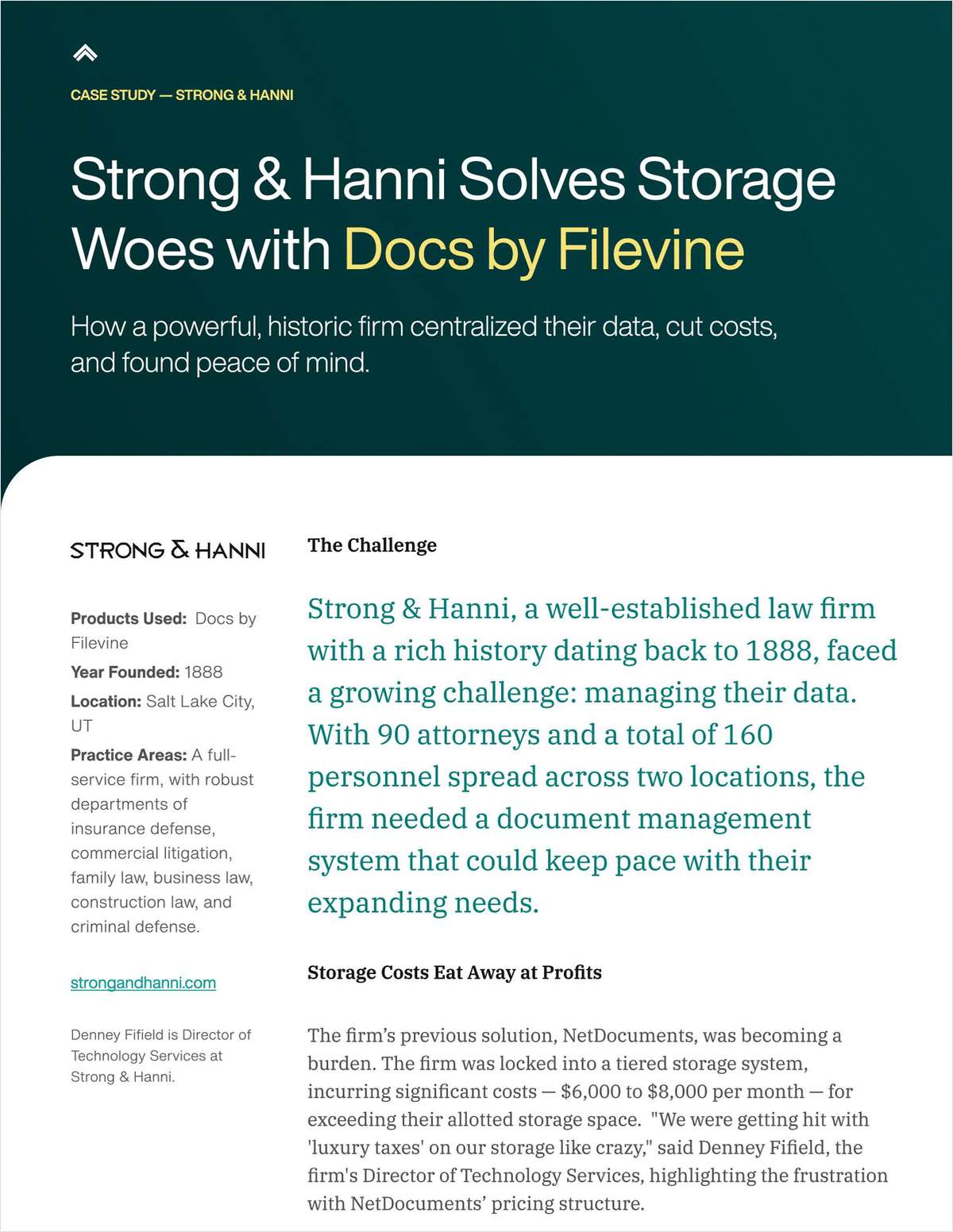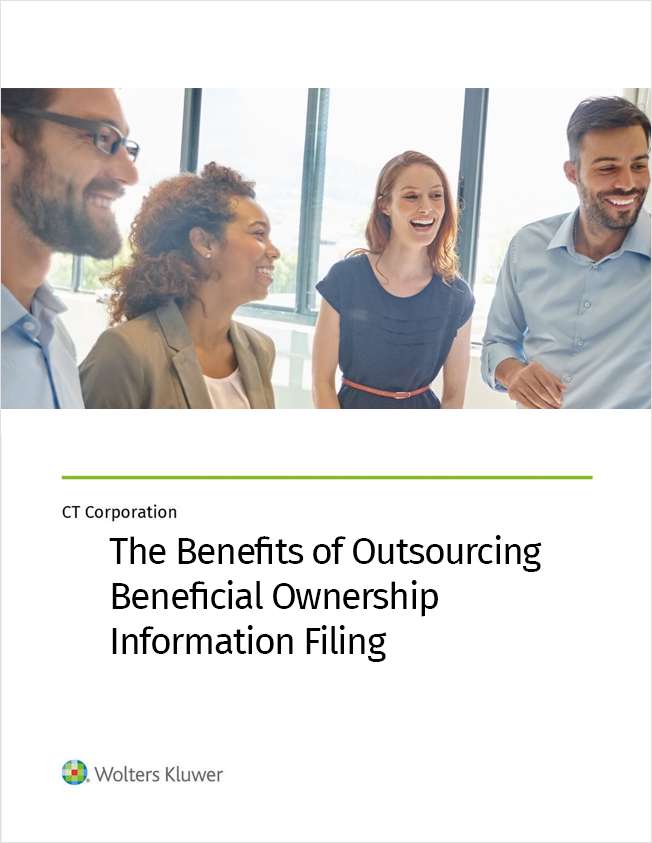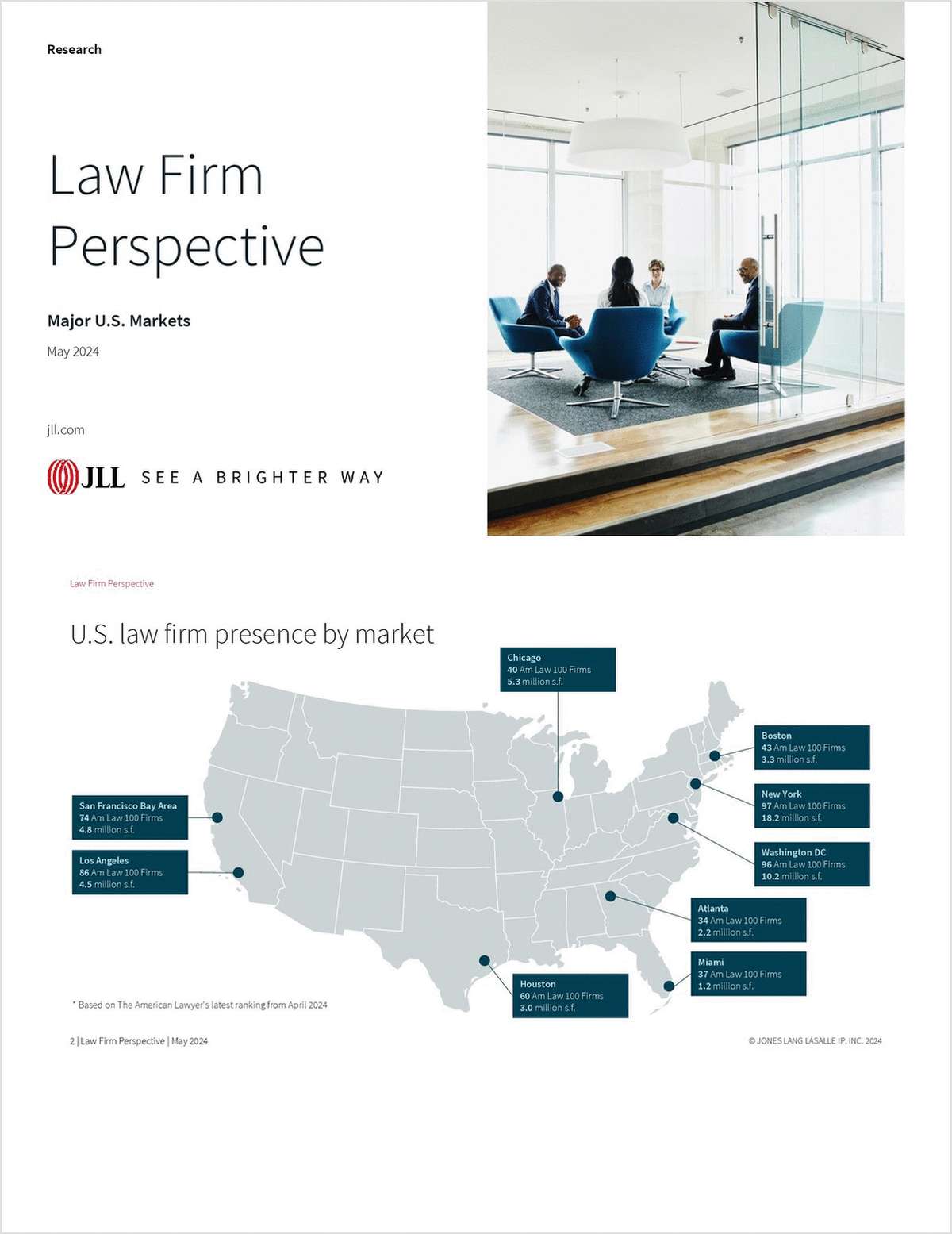 istock
istockBig Law's Midsize Competitors Are Wrestling With the Billable Hour
The billable hour can give mid-market firms an advantage against their larger rivals, but it can be profitable to move away from it.
August 28, 2019 at 11:00 AM
7 minute read
The original version of this story was published on Law.com
Editor's Note: This story is adapted from ALM's Mid-Market Report. For more business of law coverage exclusively geared toward midsize firms, sign up for a free trial subscription.
The billable hour gets knocked around, criticized, its death predicted, only to continue on, and while the discussion of doing away with it usually centers on large law firms, it's a subject mid-market firms need to wrestle with too.
Should midsize firms move away from the billable hour? Given how diverse the mid-market and its client base are, it's not surprising that when talking to firm leaders or consultants, there's no clear consensus.
But in a highly competitive legal market, everything is on the table, even if many managing partners are quick to say "It's not going anywhere." And there are clearly advantages—and potential dangers—to changing.
|The Advantage… and the Trap
One of the things that complicates things for mid-market firms—and can be an incentive to stick with the billable hour—is the comparison of their hourly billing rates against large law firms, which can show a very stark value proposition.
Courtney Paulk, president of Hirschler, a 77-lawyer firm based in Richmond, Virginia, said her firm's lower hourly rate helps them go after work pursued by big firms.
"Given our cost structure, Hirschler's hourly rates are consistently lower than our large firm competitors; standing toe-to-toe on talent, this pricing advantage allows us to compete effectively for sophisticated work," Paulk wrote in an email in response to questions.
Legal consultant Marcie Borgal Shunk, president and founder of the Tilt Institute, said midsize firms absolutely use the price difference to their advantage.
If firms can say "I'm this caliber of lawyer and you get me at $600 an hour versus $1,200 an hour," Shunk said, that can be a powerful statement.
Patrick Fuller, vice president of ALM Intelligence (a division of ALM, which also owns the Mid-Market Report), said that while many mid-market firms use the billable hour as an advantage, it does have its drawbacks.
"It can also work against firms, as the mindset that 'they aren't very expensive, so they may not be as good,' does still exist," Fuller wrote in an email.
But because mid-market firms are often competing with similar-sized peers as well as Am Law 200 firms, it can be tricky—something that James Goodnow, president and managing partner of Fennemore Craig, a 190-lawyer-plus Mountain West firm based in Arizona, pointed out.
"The billable hour is a double-edged sword for mid-market firms," Goodnow wrote in an email. "A typical mid-market firm will have average rates that are significantly lower that an Am Law 100 firm, but mid-market firms are not always competing against Big Law; they are often competing against other mid-market firms or smaller boutique firms with rates that are just as low if not lower. So, mid-market firms better offer more than lower rates if they want to land new business."
Paulk echoed those sentiments.
"Mid-market firms like Hirschler enjoy the same advantage; competing with these peers, we must differentiate ourselves on more than price," she wrote. "The value we offer comes from our commitment to offering legal excellence with business efficiency."
Joel Carpenter, the managing partner of Sullivan & Worcester, a 136-lawyer firm based in Boston, said that while his firm's rates provided an advantage when competing against Big Law, it wasn't a gigantic discount.
"The real advantage," he said, was in the billing—the hours and the efficiency.
"We're a bigger billing advantage," he said. "When we're competing against Big Law, we might have a rate advantage of charging 85% of what their rate is, but our bill is 60% of their bill.
"We don't have the same leverage. We're more efficient, so our billing hours are substantially lower. We see it and we articulate it."
He said that when it comes to competing against other mid-market firms, "we compete more on sophistication."
If you're always competing on price, it's "a race to the bottom," Carpenter said.
|Move Away from the Billable Hour?
When asked if mid-market firms should move away from the billable hour, Shunk said: "Yes and no."
Many mid-market clients aren't demanding alternative fee arrangements, though larger clients are, she said.
But there are clear advantages for midsize firms that can do work other than via the billable hour, she said.
"If you can handle the high-volume work under an AFA, you can increase profitability," she said, because you're essentially repeating processes. "If you're delivering efficiently, you can increase profitability."
Goodnow had a stronger view of the need for midsize firms to experiment with fee arrangements other than the billable hour.
"Mid-market firms need to be aggressive about using alternative fee arrangements, but only if they have the tools to price them correctly," he wrote. "Firms will lose their shirt if they price flat-rates, blended rates, contingent fees, or other alternative fees without understanding the cost of producing the services."
Fuller said there are many factors to consider when looking at whether mid-market firms should move away from the billable hour.
He said it was a tough question, with no definitive answer. Some practice areas and matters "are more conducive to the various alternative fee arrangements, he said.
Fuller said firms need to look at their internal structures when considering the issue.
"The attorney compensation structure of the firm is often an issue that needs to adjusted," Fuller wrote in an email. "Leverage and timekeeper resources are a factor as well, and in some instances, so are the outside counsel guidelines and the level of enforcement by each client.
"Ultimately, many buyers of legal services are looking for consistency and predictability with regard to their outside counsel fees."
Carpenter sounded skeptical about firms doing away with the billable hour.
"Everybody talks about it, but nobody actually does it," he said.
But that doesn't mean his firm doesn't use AFAs. Carpenter did say that his firm is accepting more contingency work, mostly in litigation.
"When a client raises AFAs, they're looking to get the work done at a lower rate," he said. "[General counsel] are working towards a budget, driven by internal pressures [and they need predictability.]
"How do you balance that? Depends on the circumstances. In the best AFAs, you share some risk and some benefits."
Paulk pointed out that the variety of clients mid-market firms have is a factor.
"Mid-market firms tend to serve a broader range of clients in terms of size and sophistication, making a 'one size' approach to pricing less practical – if not impossible," she wrote. "Client comfort plays a significant role in pricing, and in our experience, many mid-market clients are more at ease with the traditional model.
"For both the client and the firm, alternative fees arrangements are most successful where the scope or volume of work is both predictable and well defined."
This content has been archived. It is available through our partners, LexisNexis® and Bloomberg Law.
To view this content, please continue to their sites.
Not a Lexis Subscriber?
Subscribe Now
Not a Bloomberg Law Subscriber?
Subscribe Now
NOT FOR REPRINT
© 2024 ALM Global, LLC, All Rights Reserved. Request academic re-use from www.copyright.com. All other uses, submit a request to [email protected]. For more information visit Asset & Logo Licensing.
You Might Like
View All
Global 200 Firms Gaining Deal Share Amid Race to Build in India

Trending Stories
- 1Bolstering Southern California Presence, Sidley Austin Settles Into Revitalized Downtown LA Office
- 2Judge Orders Prosecution to Destroy Copies of Notes Found in Sean Combs' Prison Cell
- 3BIT Mining Bribery Scandal Highlights Trump-Biden Enforcement Gap
- 4AI Startup Founder Defrauded Investors of Millions, US Prosecutors Say
- 5Cyberattacks Slowing Down M&A Deals, Firm Report Finds
Who Got The Work
Michael G. Bongiorno, Andrew Scott Dulberg and Elizabeth E. Driscoll from Wilmer Cutler Pickering Hale and Dorr have stepped in to represent Symbotic Inc., an A.I.-enabled technology platform that focuses on increasing supply chain efficiency, and other defendants in a pending shareholder derivative lawsuit. The case, filed Oct. 2 in Massachusetts District Court by the Brown Law Firm on behalf of Stephen Austen, accuses certain officers and directors of misleading investors in regard to Symbotic's potential for margin growth by failing to disclose that the company was not equipped to timely deploy its systems or manage expenses through project delays. The case, assigned to U.S. District Judge Nathaniel M. Gorton, is 1:24-cv-12522, Austen v. Cohen et al.
Who Got The Work
Edmund Polubinski and Marie Killmond of Davis Polk & Wardwell have entered appearances for data platform software development company MongoDB and other defendants in a pending shareholder derivative lawsuit. The action, filed Oct. 7 in New York Southern District Court by the Brown Law Firm, accuses the company's directors and/or officers of falsely expressing confidence in the company’s restructuring of its sales incentive plan and downplaying the severity of decreases in its upfront commitments. The case is 1:24-cv-07594, Roy v. Ittycheria et al.
Who Got The Work
Amy O. Bruchs and Kurt F. Ellison of Michael Best & Friedrich have entered appearances for Epic Systems Corp. in a pending employment discrimination lawsuit. The suit was filed Sept. 7 in Wisconsin Western District Court by Levine Eisberner LLC and Siri & Glimstad on behalf of a project manager who claims that he was wrongfully terminated after applying for a religious exemption to the defendant's COVID-19 vaccine mandate. The case, assigned to U.S. Magistrate Judge Anita Marie Boor, is 3:24-cv-00630, Secker, Nathan v. Epic Systems Corporation.
Who Got The Work
David X. Sullivan, Thomas J. Finn and Gregory A. Hall from McCarter & English have entered appearances for Sunrun Installation Services in a pending civil rights lawsuit. The complaint was filed Sept. 4 in Connecticut District Court by attorney Robert M. Berke on behalf of former employee George Edward Steins, who was arrested and charged with employing an unregistered home improvement salesperson. The complaint alleges that had Sunrun informed the Connecticut Department of Consumer Protection that the plaintiff's employment had ended in 2017 and that he no longer held Sunrun's home improvement contractor license, he would not have been hit with charges, which were dismissed in May 2024. The case, assigned to U.S. District Judge Jeffrey A. Meyer, is 3:24-cv-01423, Steins v. Sunrun, Inc. et al.
Who Got The Work
Greenberg Traurig shareholder Joshua L. Raskin has entered an appearance for boohoo.com UK Ltd. in a pending patent infringement lawsuit. The suit, filed Sept. 3 in Texas Eastern District Court by Rozier Hardt McDonough on behalf of Alto Dynamics, asserts five patents related to an online shopping platform. The case, assigned to U.S. District Judge Rodney Gilstrap, is 2:24-cv-00719, Alto Dynamics, LLC v. boohoo.com UK Limited.
Featured Firms
Law Offices of Gary Martin Hays & Associates, P.C.
(470) 294-1674
Law Offices of Mark E. Salomone
(857) 444-6468
Smith & Hassler
(713) 739-1250












